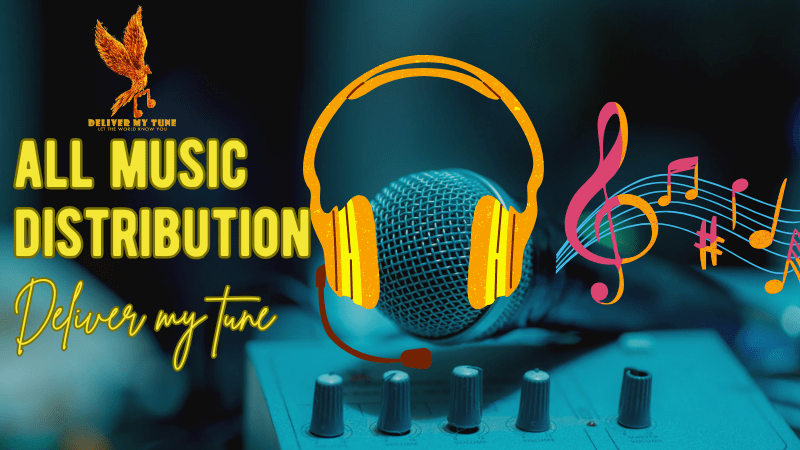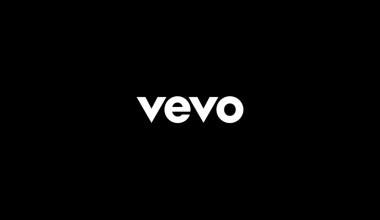Getting music heard today requires a strategic distribution approach that connects artists with a global audience. Gone are the days when physical CDs or vinyl records were the primary mediums; now, digital platforms have transformed all music distribution into an accessible, streamlined process. In this blog, we will cover everything artists need to know to distribute their music effectively, from understanding distribution basics to choosing platforms, maximizing royalties, and staying up-to-date with industry trends.
What is Music Distribution?
Music distribution is the process of sharing music with listeners worldwide through various channels, including digital streaming, physical records, and direct-to-fan platforms. The core goal of all music distribution methods is to make your music easily accessible to listeners, whether they’re streaming on Spotify or buying vinyl at a local record store.
Key Terms to Know:
- Digital Music Distribution: This term refers to getting music on streaming services like Apple Music, YouTube Music, and Spotify.
- Physical Distribution: This includes distributing music in physical formats like CDs and vinyl, which are popular among niche audiences and collectors.
- Royalty: Income that artists earn from their music when it is played or purchased.
Why is Music Distribution Important?
Music distribution is essential for any artist who wants to reach new listeners and expand their fan base. By distributing music across multiple platforms, artists can:
- Increase Visibility: Platforms like Spotify, Apple Music, and YouTube have millions of users. A good distribution strategy increases the chances of reaching these listeners.
- Earn Royalties: Distribution allows artists to earn royalties from streams and downloads.
- Build a Brand: Being present on popular streaming platforms establishes credibility and makes it easier for fans to find and support an artist.
Types of Music Distribution
Understanding the types of distribution available is key to making the best decision for your career. Here are the primary forms of all music distribution:
- Digital Distribution: The most common and accessible form, digital distribution involves uploading music to streaming services and download stores. Platforms like Deliver My Tune, TuneCore, and DistroKid help artists reach major streaming services.
- Physical Distribution: Although less common today, physical distribution remains relevant for artists targeting specific audiences. Vinyl records, CDs, and even cassette tapes are popular among collectors and certain genre enthusiasts.
- Direct-to-Fan: Platforms like Bandcamp allow artists to sell music directly to fans, often with higher profit margins. Direct sales also create stronger connections with fans, fostering loyalty.
- Label Distribution: For artists working with a label, the label typically handles distribution. Labels have established networks, but they may take a percentage of royalties.
Key Tip: New artists often benefit from a mix of digital distribution and direct-to-fan sales. This approach maximizes reach on streaming platforms while allowing artists to retain more profit from direct sales.
How Does Digital Music Distribution Work?
In digital music distribution, artists or labels upload their tracks to a music distributor. The distributor then sends the music to various streaming platforms, where listeners can access it. Here’s a step-by-step breakdown of how it works:
- Select a Distributor: The first step is choosing a distributor. Each distributor has different pricing, royalty splits, and services. For example, Deliver My Tune offers tailored packages that allow artists to distribute their music on 100+ platforms.
- Upload Your Music: This includes your audio files and album art. Make sure your music is high-quality and that your album art meets platform specifications (e.g., 3000×3000 pixels for most platforms).
- Provide Metadata: Metadata includes essential details like artist name, track title, genre, and release date. Accurate metadata ensures that your music is categorized correctly, making it easier for listeners to discover.
- Set a Release Date: Choose a release date, which can be immediate or scheduled. Scheduling a release helps build anticipation and allows time for marketing efforts.
- Distribute to Platforms: The distributor sends your music to the selected platforms, where it will be available to stream, download, or purchase.
- Monitor and Collect Royalties: Once your music is live, you start earning royalties from streams and downloads. Most distributors offer a dashboard to track streams, earnings, and listener demographics.
Choosing the Right Music Distribution Service
With so many music distribution services available, it’s essential to select one that aligns with your needs. Consider the following when evaluating distribution platforms:
- Platform Reach: Look for a distributor that reaches all major platforms, including Spotify, Apple Music, and YouTube Music.
- Royalty Splits: Some services keep a percentage of royalties, while others offer 100% royalties to the artist.
- Pricing and Plans: Choose a service within your budget that doesn’t compromise on platform reach.
- Additional Features: Some distributors offer extra features like YouTube monetization, playlist pitching, and social media promotion. For instance, Deliver My Tune provides artist support, Spotify verification requests, and more for comprehensive artist growth.
- Customer Support: Independent artists may need guidance, so good customer service is a valuable factor.
Major Music Distribution Platforms
Here’s a look at some of the most popular music distribution platforms:
- Deliver My Tune: Known for transparent royalty sharing and a wide platform reach, Deliver My Tune helps artists distribute on over 100 platforms, including Spotify and Apple Music.
- TuneCore: A reliable choice with fair royalty rates, ideal for independent artists.
- CD Baby: A classic option that offers both digital and physical distribution.
- DistroKid: An easy-to-use service for those who want unlimited uploads at an annual fee.
How to Maximize Your Royalties in Music Distribution
Earning royalties is a key benefit of all music distribution, but maximizing them requires strategy. Here are a few tips:
- Distribute to All Major Platforms: Ensure your music is available on as many platforms as possible, reaching listeners across different services.
- Optimize Your Metadata: Proper metadata ensures that your music appears in relevant search results, making it more discoverable.
- Engage with Your Audience: Engage with your listeners on social media and streaming platforms. Platforms like Spotify for Artists allow you to update your profile and interact with fans.
- Monitor and Analyze Streaming Data: Use analytics provided by streaming platforms to understand your listeners’ demographics. This data helps tailor future releases to meet fan expectations.
Steps to Distribute Your Music Globally
If you’re ready to share your music with the world, follow these steps for a smooth release:
- Finalize Your Music: Ensure it’s professionally mixed and mastered. Many platforms, including Deliver My Tune, offer AI mastering to enhance sound quality.
- Prepare Artwork: Your artwork is the face of your music. Ensure it’s high-quality and visually compelling, as it influences first impressions.
- Choose a Distributor: Research and choose a distributor based on your needs, budget, and target audience. Consider additional services like playlist pitching or promotional support if available.
- Upload Metadata: This includes details like genre, song title, artist name, and release date. Accurate metadata ensures proper categorization and better discoverability.
- Set a Marketing Plan: Successful releases often involve a marketing plan. This includes creating teaser videos, sharing countdowns, and interacting with fans to generate excitement.
- Track Performance: Use your distributor’s dashboard to track streams, downloads, and royalty earnings. Adjust your marketing efforts based on analytics to reach more fans.
Benefits of Using All Music Distribution Platforms
Choosing all music distribution options, where your music is available on multiple platforms, has clear benefits for artists:
- Increased Exposure: Every platform has a unique audience, and a broad distribution ensures your music reaches a diverse listener base.
- Higher Royalties: By maximizing distribution, artists have a greater chance to earn royalties from various platforms.
- Brand Building: A strong presence across platforms establishes credibility and increases your potential fan base.
- Access to Platform-Specific Opportunities: Each platform offers unique opportunities, such as Spotify playlist pitching or Apple Music promotions. Maximizing your reach means more opportunities to be noticed.
Common Challenges and Mistakes in Music Distribution
Many new artists make common mistakes that can hinder their success in music distribution. Here are a few to avoid:
- Skipping Metadata: Incomplete metadata can prevent your music from being categorized correctly, making it harder to find.
- Poor-Quality Artwork: Some platforms reject low-quality artwork, so ensure it meets specifications (e.g., 3000×3000 pixels for Spotify).
- Choosing the Wrong Distributor: Each distributor has unique features, so research thoroughly to find the right fit.
- Ignoring Marketing Efforts: Simply distributing your music isn’t enough. Marketing plays a significant role in helping your music reach a broader audience.
Tracking Success and Measuring Distribution Impact
Understanding the impact of your distribution efforts is essential. Platforms like Spotify and Apple Music offer analytics to track your progress. Here are key metrics to monitor:
- Total Streams: The number of times your music is played. More streams generally mean increased exposure and potential royalties.
- Geographic Data: Shows where your listeners are based, helping you plan tours and marketing campaigns.
Platform-Specific Revenue: Identifying which platforms bring in the most income allows you to focus on maximizing engagement and interaction there.Fan Engagement: Track playlist additions, shares, and comments on streaming platforms. High engagement is a positive indicator of strong listener loyalty.
Monitoring these metrics not only helps in assessing the success of a release but also assists in refining future distribution strategies.
The Importance of Metadata in Music Distribution
Metadata might seem like a minor detail, but it plays a crucial role in the distribution and discoverability of your music. Metadata refers to all the information tied to a track, including the song title, artist name, album name, release date, genre, and ISRC code (International Standard Recording Code).
Why is Metadata Important?
- Ensures Correct Categorization: Metadata allows digital platforms to correctly classify and place your music, making it easier for listeners to find.
- Improves Discoverability: Metadata optimization can increase the chances of your music being recommended in playlists and search results, especially if your genre or mood tags match what listeners are looking for.
- Facilitates Royalty Payments: Accurate metadata is essential for tracking plays and ensuring you receive royalties for each stream or download. Missing or incorrect metadata can lead to lost royalties.
- Adds Professionalism: Having clean and accurate metadata boosts your credibility and signals professionalism, making it easier for industry professionals to recognize and respect your work.
Tip: Always double-check your metadata before submitting your music to a distributor. Many platforms offer metadata editing tools, but getting it right the first time saves time and maximizes exposure.
Marketing Your Music During Distribution
Once your music is on all major platforms, a strategic marketing plan is necessary to reach a wider audience and maximize the impact of your release. Here are some tried-and-tested marketing techniques:
- Social Media Promotion: Utilize platforms like Instagram, Twitter, and TikTok to share teasers, countdowns, and behind-the-scenes content leading up to your release. Engaging visuals and consistent posting keep your followers excited and engaged.
- Collaborate with Influencers: Collaborating with influencers or other artists can broaden your reach and expose your music to new listeners. Even a simple story share by an influencer can help spark interest among their followers.
- Engage in Playlist Pitching: Playlists on platforms like Spotify and Apple Music have become crucial for visibility. Pitch your music to playlists that match your genre, mood, and theme. Independent playlists, in particular, can help you gain initial traction before your music reaches larger curatorial playlists.
- Email Marketing: Building an email list of loyal fans ensures you have a direct communication channel. Use it to announce new releases, exclusive content, or upcoming live performances. Email campaigns are effective for keeping fans in the loop and driving engagement.
- Host a Virtual Listening Party: Consider hosting a listening party on YouTube Live, Instagram Live, or Zoom. Fans enjoy the interaction, and it’s a chance to explain your inspiration, answer questions, and build a more personal connection.
- Utilize Paid Ads: Platforms like Facebook, Instagram, and YouTube offer targeted advertising that can help you reach new listeners based on their interests and demographics. Setting a small budget for paid ads can boost your reach and introduce your music to a broader audience.
- Offer Merchandise and Bundles: If you have a loyal fan base, consider creating limited edition merchandise, such as T-shirts, posters, or vinyl. Bundling these with your music creates a unique package that fans will love to support.
Emerging Trends in Music Distribution
The world of all music distribution is constantly evolving, with new trends that artists should be aware of to stay competitive. Here are a few noteworthy trends:
- Blockchain and Decentralized Distribution: Blockchain technology promises transparency and faster royalty payments. Platforms using blockchain can offer fairer splits and more immediate payouts, which benefits artists directly.
- AI-Powered Tools: Artificial intelligence is transforming the industry by offering predictive analytics, personalized marketing, and even AI mastering. AI-based tools like those provided by Deliver My Tune can assist in making your music sound polished and professional.
- Direct Fan Engagement Models: Artists are increasingly looking to connect directly with their fans, whether through platforms like Patreon or their own websites. This model allows artists to retain more profits and build closer relationships with their audience.
- Augmented Reality (AR) and Virtual Reality (VR) Experiences: The integration of AR and VR into music marketing is changing the way fans experience music. These technologies allow for immersive experiences, such as virtual concerts or interactive music videos, enhancing fan engagement.
- Increased Focus on Data Analytics: Platforms like Spotify for Artists provide in-depth analytics that help artists understand their listeners’ preferences. This data is valuable for shaping future releases, targeting marketing efforts, and crafting more personalized fan experiences.
- Expansion of Non-Traditional Music Platforms: Platforms like TikTok and Twitch are increasingly being used for music promotion. Short-form video platforms have become valuable for musicians to promote songs, especially when aiming for viral moments.
Wrapping Up: The Future of All Music Distribution
As the music industry continues to evolve, all music distribution is about embracing change, staying informed, and being proactive in promoting and managing your music. The journey from creating music to getting it distributed and heard globally involves careful planning, strategic marketing, and consistent engagement with fans.
To maximize your impact, always ensure you’re using reliable distribution services, stay updated on industry trends, and actively work on marketing your music. Platforms like Deliver My Tune offer all-encompassing solutions to support artists in navigating the complex distribution landscape with tools that simplify uploading, mastering, and tracking.
In this digital age, every artist has the opportunity to reach a global audience, earn royalties, and build a sustainable music career. Remember, distribution is not just about making your music available; it’s about creating connections, engaging fans, and building a long-lasting presence in the music world. Start your journey with the right distribution strategy, and let your music resonate worldwide.
Related Articles:
For further reading, explore these related articles:
- How to Become a Successful Music Artist in India in 2024?
- Promo Cards on Spotify: A Game Changer for Artists
- How to Secure a Distribution Deal in Music: A Complete Guide for Artists
For additional resources on music marketing and distribution, visit Deliver My Tune.






